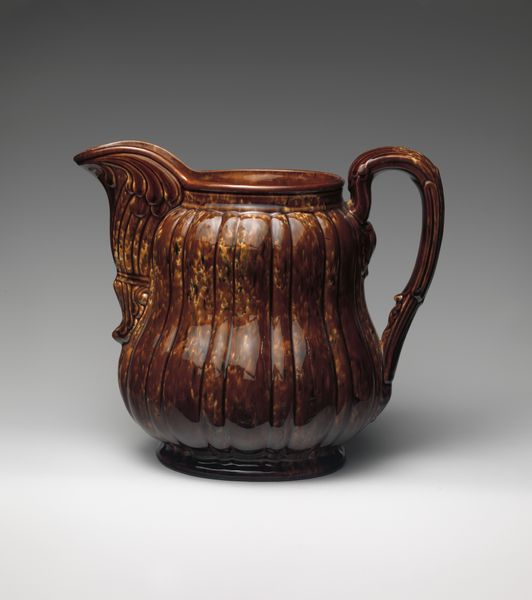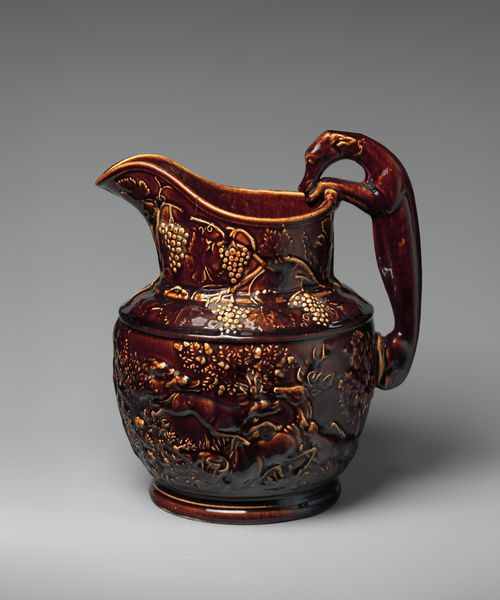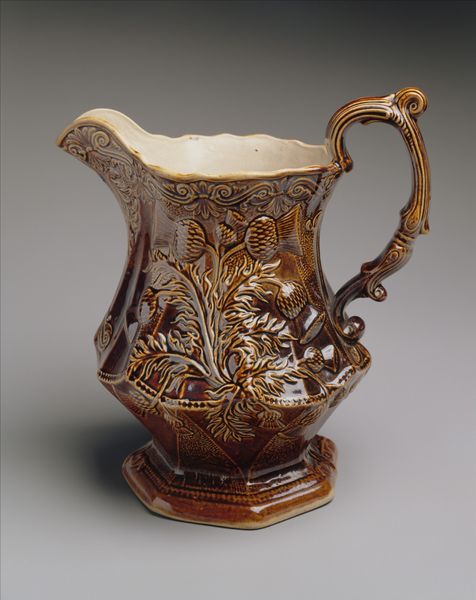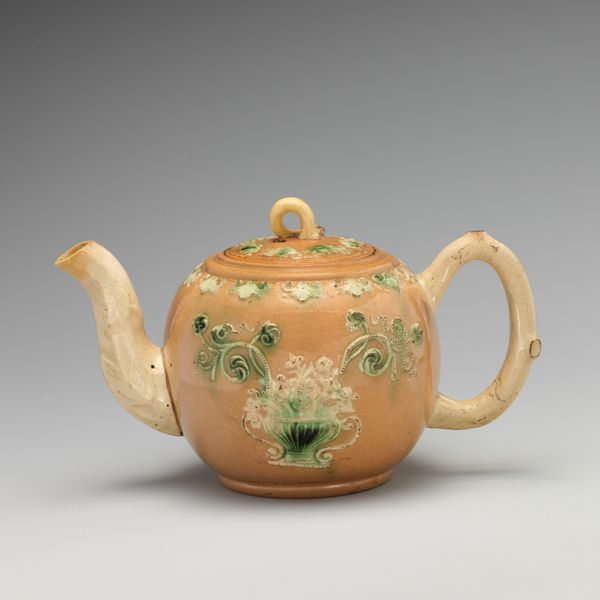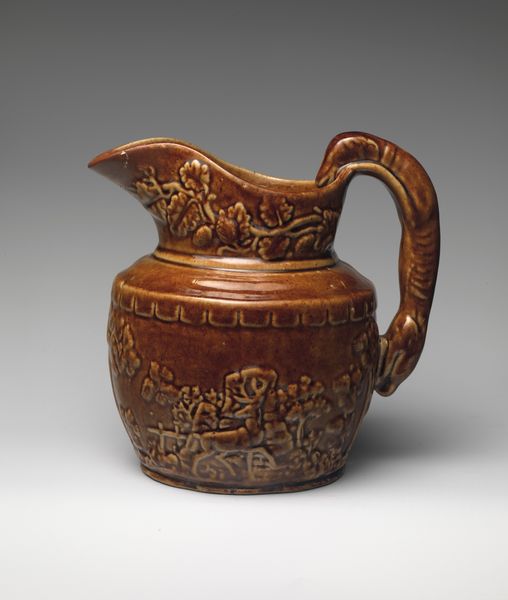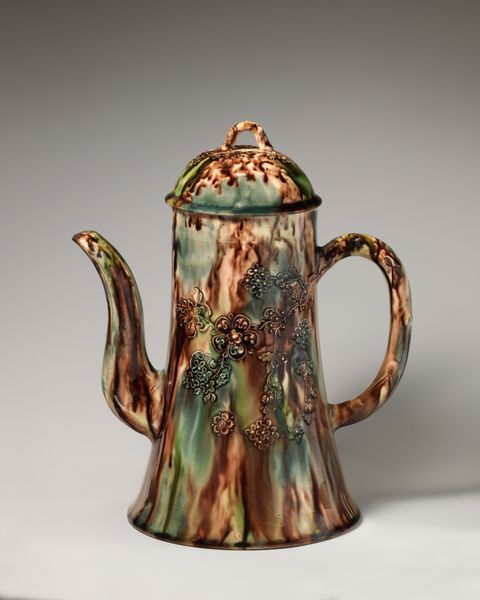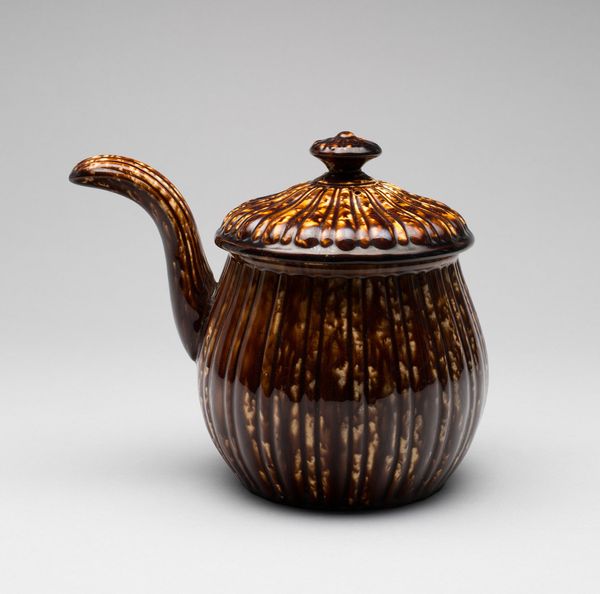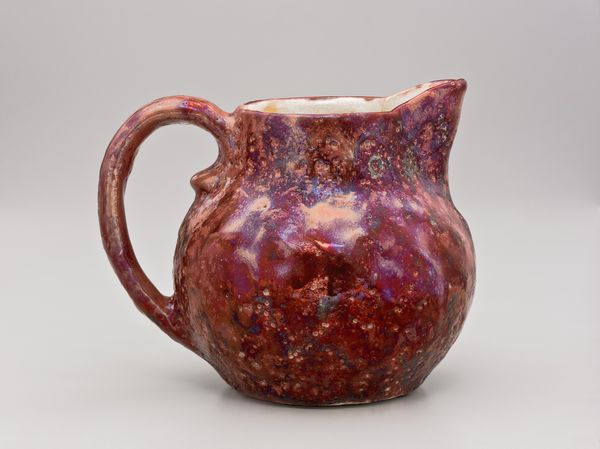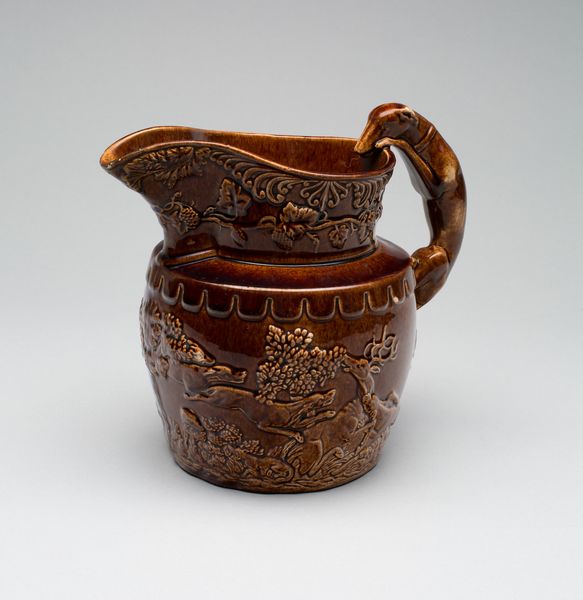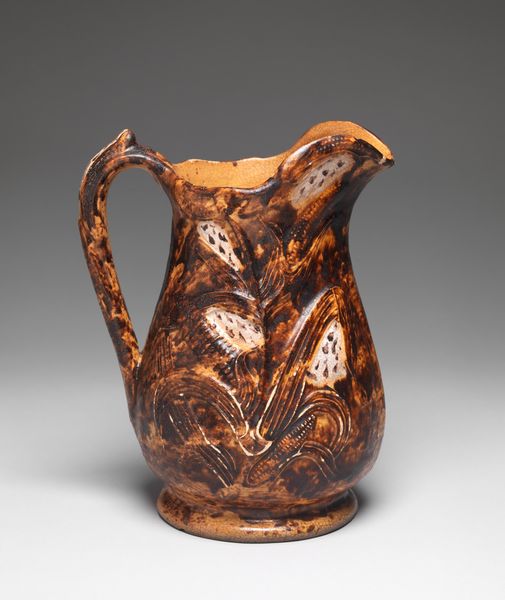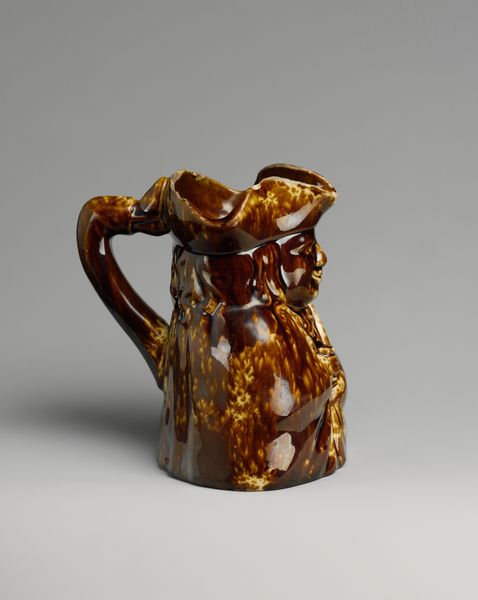
ceramic
#
ceramic
#
stoneware
#
ceramic
#
united-states
#
decorative-art
Dimensions: 10 1/2 in. (26.7 cm)
Copyright: Public Domain
Curator: This is an ice pitcher, dating back to between 1849 and 1853, made by Congress Pottery. Editor: My first impression is of something very grounded, very autumnal, almost medieval. The heavy glazing, the brown hues... it gives it a sense of weight and permanence. Curator: Yes, the stoneware really lends to that sense of earthiness. Note the decorative grape motifs. Grapes are fascinating in that they can represent pleasure, celebration and luxury, but also faith and sacrifice, due to the role of wine in religious sacraments. The grapevine has always served as such a deeply layered symbol. Editor: And the vine itself, as an emblem of connection and community. Given this was made in America during the mid-19th century, I’m curious about who had access to this type of luxury item. Were enslaved people involved in the making or procuring of the raw materials needed to create such stoneware in the United States during that period? Curator: It’s certainly vital to consider the complete context. Looking at the handle shaped like a twig – that draws on nature. You often see nature motifs appear during social and political upheaval; nature as a symbol of permanence and as a place of respite. And grapes and vines symbolize prosperity and even rebirth. Editor: But there's also a darker side to these images of fecundity, especially during this era. I see echoes of colonial fantasies, these 'untouched' landscapes waiting to be exploited and cultivated, ignoring the forced labor involved in realizing such perceived abundance. I wonder how Congress Pottery fits into those colonial narratives of power. Curator: A fair question. These symbols, as beautiful and celebratory as they might appear on the surface, often have multi-layered significations. It compels us to think more critically about who controls these symbolic vocabularies. Editor: Precisely. It’s crucial that we remember and reckon with how these cultural artifacts can, consciously or not, perpetuate problematic assumptions about culture, land, and the human cost that goes into making something so pretty. Curator: Absolutely. A sobering but necessary way to view this piece and pieces from this period. Editor: Exactly, and recognizing that opens up new ways to relate to art history.
Comments
No comments
Be the first to comment and join the conversation on the ultimate creative platform.
